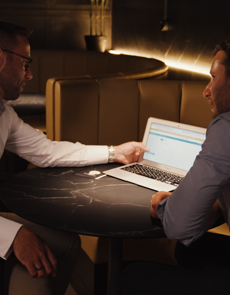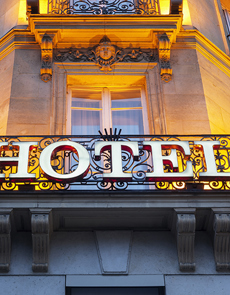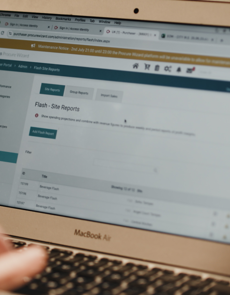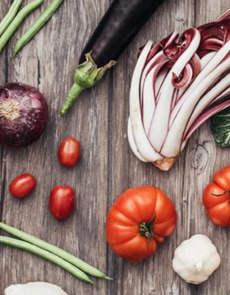How much does a hospitality purchasing system cost
If you’re considering investing in a new purchasing system for your hospitality business, then you’re probably thinking about how you can significantly reduce operating costs.
And you’re not alone, in 2022 it was reported that food products for the hospitality sector were reported to have risen by 8.1% alongside soaring costs in energy bills, labour, and insurance costs. Purchasing software can help businesses identify areas where they can reduce costs, such as by negotiating better deals with suppliers or by using data analytics to optimise their purchasing decisions.
But with rising costs comes restricted budgets, so the first thing you’ll want to know is ‘how much does it cost?’. Here at Access Hospitality, we help businesses identify and target areas of their businesses where they can reduce costs and create more efficient processes to save time at a price that works with their budget.
In this article, we'll delve into the typical influences that impact the cost of a procurement system, what features are typically included, and how such a system can benefit your business. We'll also explore some of the different suppliers in the market, including their features and price points, to help you make an informed decision. By the end of this article, you'll have a better understanding of what a purchasing system does and how it can help your business thrive.
Typical factors that influence the cost of a purchase-to-pay system
A purchase-to-pay (P2P) system is a software application that streamlines the entire procurement process, from purchasing to payment. The cost of implementing a P2P system can vary depending on several factors, including:
- Size of the business – larger food and beverage operators typically require more complex and sophisticated P2P systems, which can be more expensive to implement and maintain.
- The complexity of the procurement process – the more complex the procurement process, the more functionality the P2P system will need to have, which can increase the cost.
- Level of automation – P2P systems that automate more of the procurement process will generally be more expensive.
- Number of suppliers – the more suppliers that the business has, the higher the cost may be to integrate them into the P2P system.
- Customisation – customisation of the P2P system to meet specific business requirements can increase the cost.
- Integration with other systems – integrating the P2P system with other systems, such as inventory management or recipe management software, can increase the cost.
- Service level agreements (SLAs) – the level of support required for the P2P system, as defined in the SLAs, can impact the cost.
- Training and support – the cost of training users and providing ongoing support can add to the overall cost of the P2P system.
- Compliance requirements – operators may have specific compliance requirements, such as food safety regulations, that need to be incorporated into the P2P system, which can increase the cost.
Features needed
Purchase-to-pay solutions enable you to manage all supplier purchase orders, delivery notes, electronic and paper invoices which can be digitalised, prices, and products in one place, via a single point of control. A purchase-to-pay system is one of the easiest, and most effective ways to maximise service delivery and save costs.
Basic features may include:
- e-Purchase orders – enabling you to quickly and efficiently place orders, directly from your supplier listings.
- Self-managed suppliers – with fully configurable supplier relationships e.g. delivery schedules or minimum order values.
- Configurable approval structures for orders – set company supply chain / approval policies for every employee, for every order, regardless of the complexity of the policy.
- Orders, deliveries and invoicing – gain transparency of data with integration between goods ordered, goods received, supplier invoices and credits.
Additional features, which may incur additional costs, could include:
- Integration and Accounts Payable – eliminate storage of paper invoices by integrating with your account software.
- Paperless invoice capture – for all your non-purchase-to-pay invoices. Capture 100% of invoices electronically with the functionality to receive PDF invoices by email.
- Food waste management – helps operators to track waste against multiple menus, categories, and units so you can identify and reduce avoidable waste.
- Stock control – enabling operators to gain control over their inventory and stock management, so they can quickly and easily perform full stock takes and line checks.
- Allergens – helps operators to identify allergens within products and ensure all allergen information is up to date within menus and on their website.
- Nutrition – quickly and easily calculate nutritional and calorie information when building out your recipes.
- Menu engineering – recipe and menu software to create batch recipes, design spec sheets, and analyse the profit margins of your menu.
- Flash reporting – control your purchases and track spending against budgets, with full visibility of your business financials, including your forecast, petty cash spending and sales.
Software updates
Cloud-based solutions allow you to benefit from regular updates, ensuring you are always on the latest version of the software without additional charges.
Ongoing support and service fees
Providers will generally have flexible support plans to ensure you only pay for the level of support relevant and suitable to your business. Some may even have flex points that bespoke advisory services include in part of your plan to ensure you get the assistance needed with any projects that your business might be working on.
Costs of implementation / set up costs
Providers may generally work in one of two ways, either an upfront cost for implementation or all implementation and setup costs will be included in the monthly fees, so there are no hefty upfront charges, where you’ll only pay for bespoke developments if required.
What does a purchase-to-pay system do?
A hospitality Purchase-to-Pay (P2P) system is a software platform that streamlines the procurement process for hospitality businesses such as hotels, restaurants, and catering companies.
The system automates the entire procurement process, starting from the purchase requisition through to payment processing, whilst still tracking any price changes or discrepancies. It typically includes the following features:
Purchase requisition management – this allows users to create and manage purchase requisitions electronically, including specifying the product or service required, the quantity, and the preferred supplier.
Purchase order management – once the requisition is approved, the system automatically generates a purchase order, which is sent to the supplier.
Invoice processing – the system automatically matches the purchase order to the supplier invoice and initiates the payment process. If there is a discrepancy, this will also be highlighted so you can initiate the credit request.
Supplier management – the system maintains a database of approved suppliers, including their contact information, pricing, and contract terms.
Reporting and analytics – the system provides real-time data and analytics to help hospitality businesses make better-informed purchasing decisions.
Click here to view our handy step-by-step P2P flowchart.
Overall, a hospitality P2P system helps businesses streamline their procurement process, reduce errors and costs, and improve supplier relationships.
How can you determine the ROI of your purchase to pay system?
Whether you’re currently managing your procurement through manual processes, or you’re looking to switch procurement providers, there are some key returns on investment benefits for you to consider.
Save time and money with automated invoice processing
Manual invoice processing can be a time-consuming and inefficient process, leading to unnecessary labour costs and unproductive use of time. By automating the process, you can reduce time spent on manual tasks by up to 95%, resulting in an average cost savings of €1.2k per €100k spent. This allows you to reallocate resources to areas that could increase performance and improve overall efficiency.
Boost profitability with food waste management
Implementing a food waste management system can lead to a 4% reduction in avoidable waste, resulting in increased profitability. By tracking waste across multiple menus, categories, and units, you can proactively address the issue at its source and develop a waste reduction plan. This allows you to quickly record waste and make changes that improve your bottom line.
Better visibility over alternative suppliers and pricing comparisons
Using procurement technology can automate and speed up invoice reconciliation, increasing credit capture from an average of 0.2% to 1.5%. For instance, a restaurant operator with a €4m annual F&B spend could capture €60,000 at 1.5% compared to €8,000 at 0.2%.
Access Procure Wizard allows for supplier price comparisons at the point of purchase, enabling better decision-making and cost savings. Suppliers also receive missed opportunity reports, creating a competitive marketplace.
How much does a hospitality purchasing system cost?
When it comes to purchasing a system for your hospitality business, the functionality offered by different suppliers can have a significant impact on the price point.
At Access Hospitality, we've researched the leading purchase-to-pay software suppliers in Ireland and the UK and have found that generally, the more functionality a system offers, the higher the price point. However, by opting for a modular system, you can start with a more basic package and add additional functionality over time to keep costs under control while still benefiting from the wider range of features. It's important to get a clear understanding of the costs involved, from implementation to ongoing monthly fees, when evaluating different suppliers.
There are many different purchase-to-pay solutions available, and no two are the same, making it difficult to draw any direct comparisons. So, at Access Hospitality, we’ve done a bit of digging into the different functions and features of some of the leading software suppliers in Ireland and the UK that might influence their pricing.
Note: This table includes only a selection of the features available from each provider. It's important to carefully evaluate the needs of your hospitality business and compare the features and costs of different procurement solutions before making a decision. It may be helpful to request quotes from multiple vendors and negotiate pricing based on the specific needs and requirements of your business.
How does pricing of Access Procure Wizard work
Access Procure Wizard is a comprehensive hospitality purchase-to-pay solution that empowers hospitality businesses to streamline their procurement process and save costs. This powerful tool provides end-to-end visibility and control over the procurement process, from order creation to invoice reconciliation, making it easier to manage suppliers, reduce waste, and enhance profitability.
One of the standout features of Access Procure Wizard is its modular design, which allows businesses to pick and choose the modules that suit their specific needs. This means that you can start small with the purchase-to-pay module and then grow the platform with your business by adding additional modules such as menu engineering or Stock Control. Alternatively, you can opt-in to all modules and benefit from lower implementation costs included in the monthly SaaS fees.
Access Hospitality understands that every business is unique and has its requirements, which is why their team of hospitality sector specialists works with each business to build tailor-made price packages that meet their specific needs. They take into account the number of sites, users, and functionality required to ensure the package is suitable for the business.
For smaller businesses, a more basic package can be selected, allowing them to keep within their budget, while larger operators can benefit from multi-site savings. This flexibility ensures that businesses of all sizes can benefit from the features and functionality of the Access Procure Wizard system, making it a cost-effective solution for all.
What next?
In this article, we have discussed what a hospitality purchase-to-pay system does and the typical features and modules that these types of systems consist of. We’ve also shared some very high-level starting prices for some of the different providers and how their features may differ, along with the type of return on investment you can expect to see with this type of solution.
If you’d like more detailed product information on the different features and modules of a procurement system, please download the Access Procure Wizard brochure , or to watch the system in action, view our 7 min demo video.
In this article, we have provided an overview of the key features and modules of hospitality purchase-to-pay systems and how they might influence the cost of some of the leading providers in Ireland and the UK. We hope this article has helped you understand how a purchase-to-pay system can benefit your business and improve your bottom line.
Related resources
Discover more on purchasing and invoicing, menu and recipe costing and allergen and nutritional analysis requirements.
Watch 7 min demo






